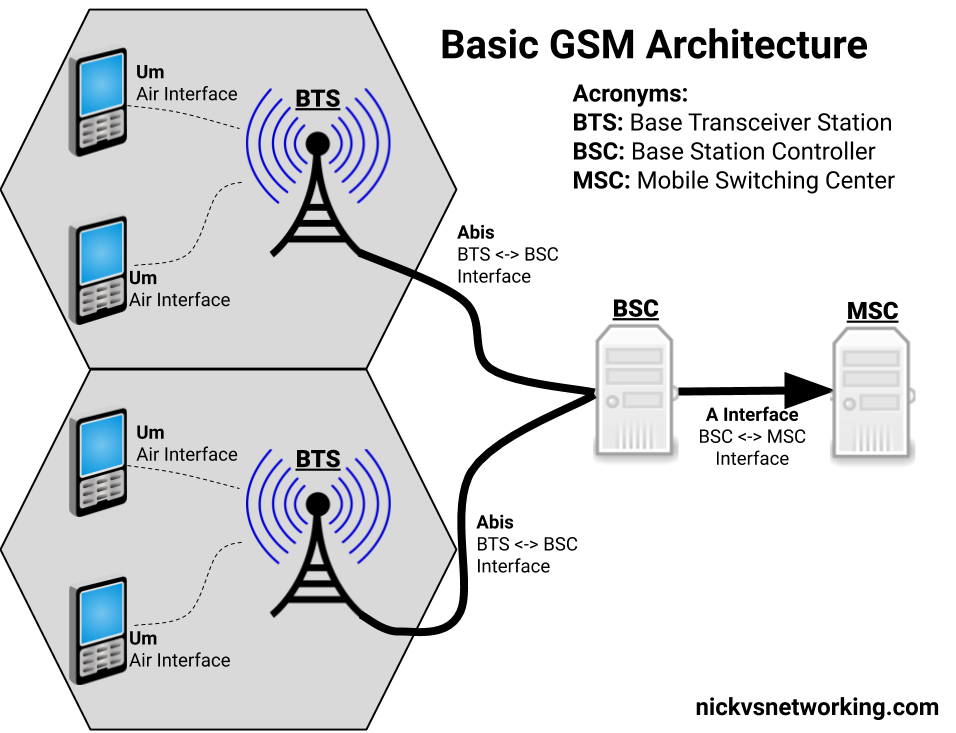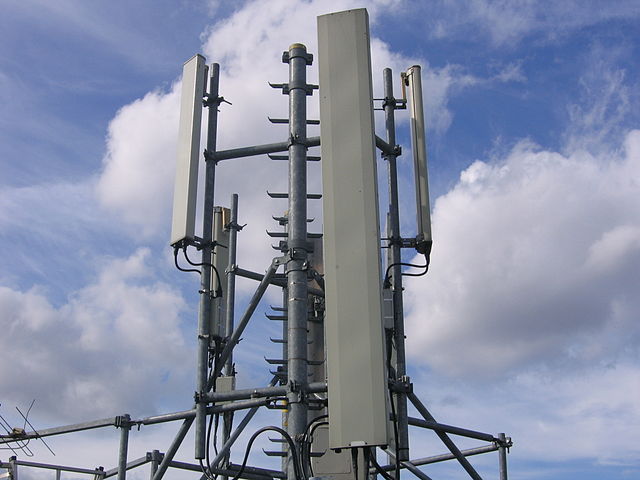By far the most visable part of any mobile network (apart from your phone!) is the Base (Transciver) Stations.
Dotted around the countryside, on masts, towers and monopoles, whether you notice them or not, base stations are everywhere.
The Architecture
The RF side of LTE has an eNodeB, which is a smart device. – You connect it to a TCP/IP network, it establishes a connection with your MME(s) and away you go.
A GSM BTS (Base Transceiver Station) isn’t all that clever…
The BTS is a similar to the WiFi access points that talk to a centralised controller for all their thinking.
A BTS gets most of its brains from elsewhere and essentially just handles the TX/RX of baseband data.
That elsewhere is the BSC – Base Station Controller. Each BTS connects to a BSC, and a BSC would typically control a number of BTS.
We’ll explore the BSC and it’s connections in depth, but I’ve put together a basic diagram of how everything fits together below.

Um Interface
The Um interface is the Air Interface of GSM. It’s what takes the data and sends it out “over the air”.
There’s a lot to know about air interfaces, and I know very little. What I do know is I need to set the Um interface to use a frequency band my mobile phone supports (so I can see and connect to the network).
The Abis Interface
The fact that GSM was first deployed in 1991, explains why the Abis interface used ISDN E1/T1 TDM links to connect the Base Transceiver Stations (BTSs) to the Base Station Controller (BSC).
While now looking back you may ask why TCP/IP wasn’t used for the Abis interface, keep in mind that Windows 95 was the first version to include TCP/IP support, and that gives you an idea of the state of play. ISDN is very reliable and was well known in the telco space at that time.
I no longer have any ISDN hardware, so for me this is all going to be built using packet switched networks working as circuit switched.
Osmocom does have support for E1/T1 interfaces, so if you’ve got BTS hardware that only communicates over TDM links, that’s an option too.
GSMA never wrote a standard for taking Abis over IP, so as such each vendor has implemented it differently.
Osmocom have a flavour of Abis over IP protocol they’ve developed based on traces from a commercial implementation which we’ll be using. You can find the full protocol spec for Osmocom’s Abis over IP interface here.
OML Interface
With all the brains for the BTS residing in the BSC, there’s a need to control the BTS from the BSC. The Operation and Maintenance Link (OML) is a protocol for changing certain parameters of the BTS from the BSC.
A prime example of use of the OML would be the BSC turning the BTS off/on.
We’ll see a tiny bit of OML usage in the next post, just for turning the BTS off and on.
So let’s put this into practice and setup a virtual BTS with Osmocom.

One thought on “GSM with Osmocom Part 2: BTS Basics”